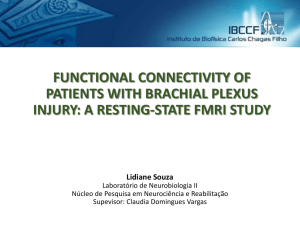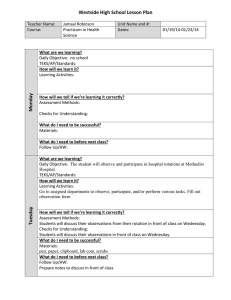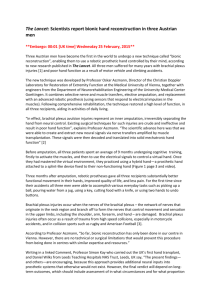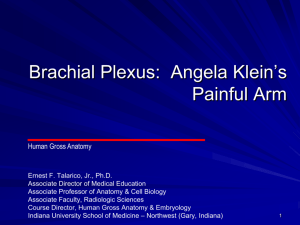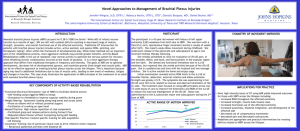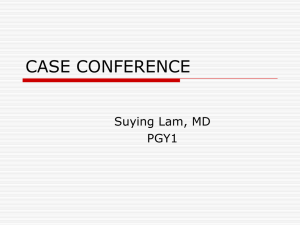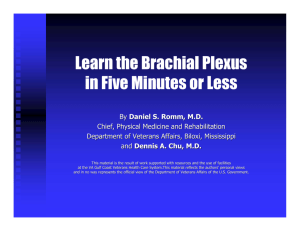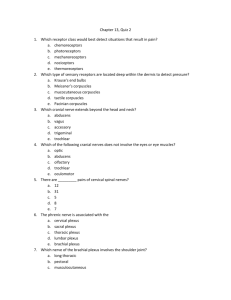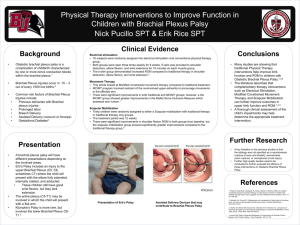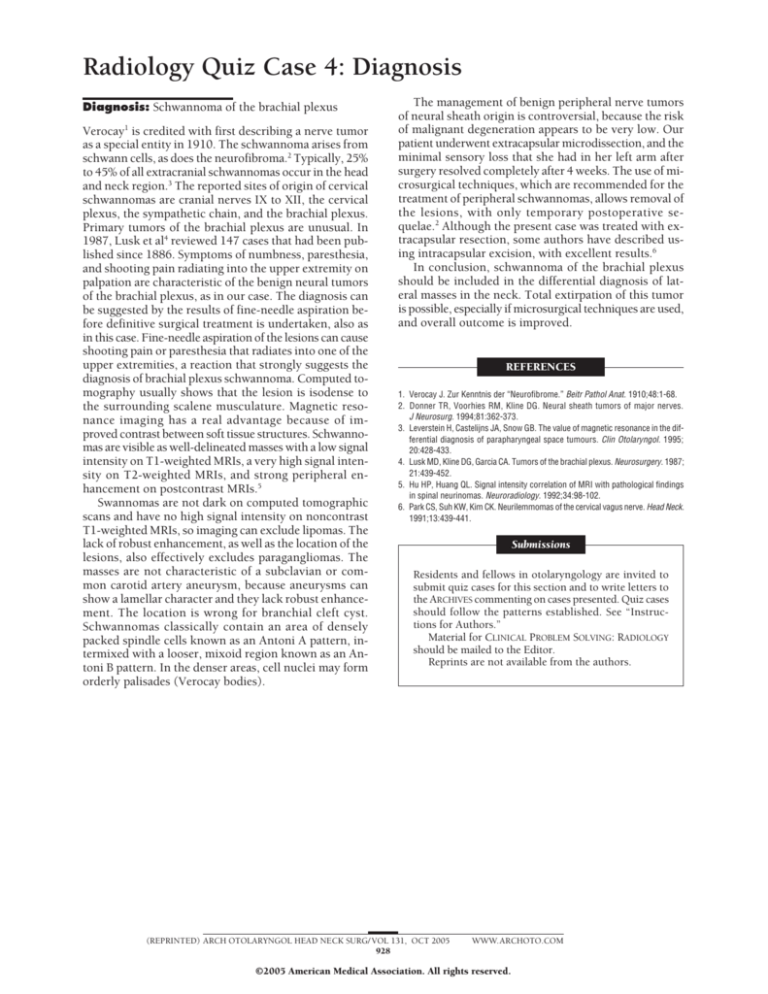
Radiology Quiz Case 4: Diagnosis
Diagnosis: Schwannoma of the brachial plexus
Verocay1 is credited with first describing a nerve tumor
as a special entity in 1910. The schwannoma arises from
schwann cells, as does the neurofibroma.2 Typically, 25%
to 45% of all extracranial schwannomas occur in the head
and neck region.3 The reported sites of origin of cervical
schwannomas are cranial nerves IX to XII, the cervical
plexus, the sympathetic chain, and the brachial plexus.
Primary tumors of the brachial plexus are unusual. In
1987, Lusk et al4 reviewed 147 cases that had been published since 1886. Symptoms of numbness, paresthesia,
and shooting pain radiating into the upper extremity on
palpation are characteristic of the benign neural tumors
of the brachial plexus, as in our case. The diagnosis can
be suggested by the results of fine-needle aspiration before definitive surgical treatment is undertaken, also as
in this case. Fine-needle aspiration of the lesions can cause
shooting pain or paresthesia that radiates into one of the
upper extremities, a reaction that strongly suggests the
diagnosis of brachial plexus schwannoma. Computed tomography usually shows that the lesion is isodense to
the surrounding scalene musculature. Magnetic resonance imaging has a real advantage because of improved contrast between soft tissue structures. Schwannomas are visible as well-delineated masses with a low signal
intensity on T1-weighted MRIs, a very high signal intensity on T2-weighted MRIs, and strong peripheral enhancement on postcontrast MRIs.5
Swannomas are not dark on computed tomographic
scans and have no high signal intensity on noncontrast
T1-weighted MRIs, so imaging can exclude lipomas. The
lack of robust enhancement, as well as the location of the
lesions, also effectively excludes paragangliomas. The
masses are not characteristic of a subclavian or common carotid artery aneurysm, because aneurysms can
show a lamellar character and they lack robust enhancement. The location is wrong for branchial cleft cyst.
Schwannomas classically contain an area of densely
packed spindle cells known as an Antoni A pattern, intermixed with a looser, mixoid region known as an Antoni B pattern. In the denser areas, cell nuclei may form
orderly palisades (Verocay bodies).
The management of benign peripheral nerve tumors
of neural sheath origin is controversial, because the risk
of malignant degeneration appears to be very low. Our
patient underwent extracapsular microdissection, and the
minimal sensory loss that she had in her left arm after
surgery resolved completely after 4 weeks. The use of microsurgical techniques, which are recommended for the
treatment of peripheral schwannomas, allows removal of
the lesions, with only temporary postoperative sequelae.2 Although the present case was treated with extracapsular resection, some authors have described using intracapsular excision, with excellent results.6
In conclusion, schwannoma of the brachial plexus
should be included in the differential diagnosis of lateral masses in the neck. Total extirpation of this tumor
is possible, especially if microsurgical techniques are used,
and overall outcome is improved.
REFERENCES
1. Verocay J. Zur Kenntnis der “Neurofibrome.” Beitr Pathol Anat. 1910;48:1-68.
2. Donner TR, Voorhies RM, Kline DG. Neural sheath tumors of major nerves.
J Neurosurg. 1994;81:362-373.
3. Leverstein H, Castelijns JA, Snow GB. The value of magnetic resonance in the differential diagnosis of parapharyngeal space tumours. Clin Otolaryngol. 1995;
20:428-433.
4. Lusk MD, Kline DG, Garcia CA. Tumors of the brachial plexus. Neurosurgery. 1987;
21:439-452.
5. Hu HP, Huang QL. Signal intensity correlation of MRI with pathological findings
in spinal neurinomas. Neuroradiology. 1992;34:98-102.
6. Park CS, Suh KW, Kim CK. Neurilemmomas of the cervical vagus nerve. Head Neck.
1991;13:439-441.
Submissions
Residents and fellows in otolaryngology are invited to
submit quiz cases for this section and to write letters to
the ARCHIVES commenting on cases presented. Quiz cases
should follow the patterns established. See “Instructions for Authors.”
Material for CLINICAL PROBLEM SOLVING: RADIOLOGY
should be mailed to the Editor.
Reprints are not available from the authors.
(REPRINTED) ARCH OTOLARYNGOL HEAD NECK SURG/ VOL 131, OCT 2005
928
WWW.ARCHOTO.COM
©2005 American Medical Association. All rights reserved.

